Solids Flow Issues - Causes and Cures
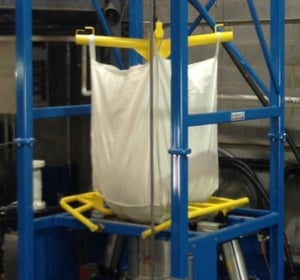 Over the past 50+ years, the flow of solids from hoppers, bins and silos has been studied extensively and is well documented. There are several properties that affect how a particular solid will flow. These can be measured, and with this knowledge, containers can be properly designed to promote uninterrupted mass flow and avoid problems such as arching (bridging), rat-holing and funnel flow. This post provides an overview of some of the key properties of solids, the flow problems they can cause, and how problems can be avoided or remedied.
Over the past 50+ years, the flow of solids from hoppers, bins and silos has been studied extensively and is well documented. There are several properties that affect how a particular solid will flow. These can be measured, and with this knowledge, containers can be properly designed to promote uninterrupted mass flow and avoid problems such as arching (bridging), rat-holing and funnel flow. This post provides an overview of some of the key properties of solids, the flow problems they can cause, and how problems can be avoided or remedied.
Properties of Solids
When analyzing solids for flow characteristics, the following are some key properties that can affect how they will flow out of a hopper, bin or silo:
Cohesiveness: This property measures a material’s resistance to shear stress (i.e. flow). It is determined by placing a sample of material under increasing amounts of downward pressure and measuring the shear (sideways) force required to overcome its internal resistance at each pressure. When forces are properly graphed, the slope of the line drawn through them is referred to as the material’s “Flow Function.” The results can then be compared against known Flow Functions of other materials that range between non-flowing and free-flowing as shown below.
Increasing external (downward) pressure is not the only thing that can affect a material’s internal cohesiveness and resistance to flow. Other factors, including particle size distribution, shape, moisture content and time can also affect its Flow Function.
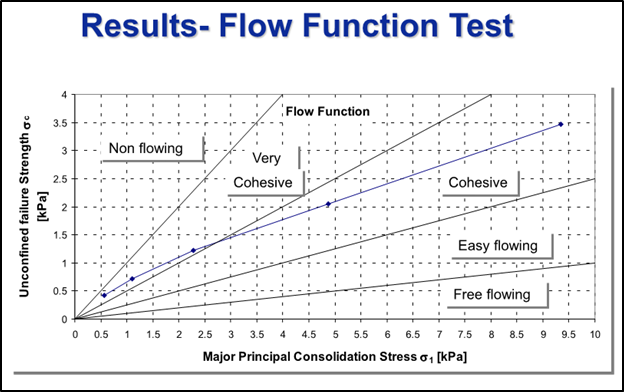
Compressibility: As seen in the graphs below, when particles of a solid are squeezed together by increasing force, they will naturally compact into denser mixtures with higher bulk densities. While materials of different particle sizes shown in the first graph are compressed by approximately the same relative percentage, the change in their Flow Functions reflects a much greater degree of relative increase for materials with smaller particles. As such, they will likely exhibit a much greater increase in internal cohesiveness.
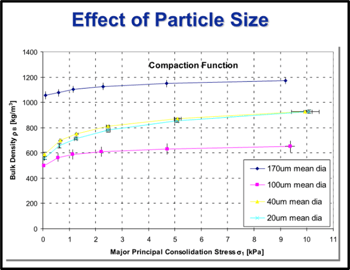
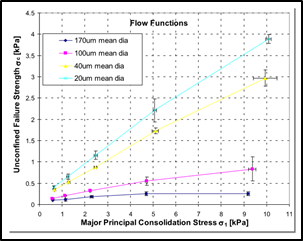
Moisture Content: The moisture content of a material can have varying effects on the flow properties and behavior of solids. However, higher moisture contents generally result in increased adhesion between particles due to a combination of Van der Waals and electrostatic forces. While important, in most instances (but certainly not all), the effect of moisture on a material’s Flow Function is not nearly as great as most other factors discussed here.
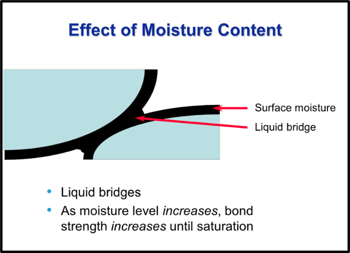
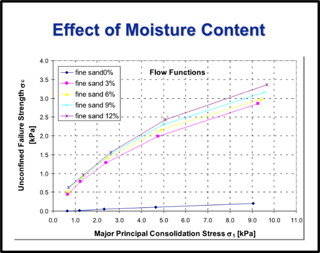
Wall Friction: The resistance to flow that a hopper’s wall material and surface finish have on a given solid is referred to as wall friction. It is measured as the angle of the slope of the Flow Function as determined by using differing materials of construction in the test apparatus. As shown below, the smoother the wall finish, the lower the hopper wall angle must be for gravity to overcome frictional resistance between the wall and the solid particles. The goal of this test is to determine the necessary hopper outlet angle that will achieve mass flow of the material down through and out of the container.
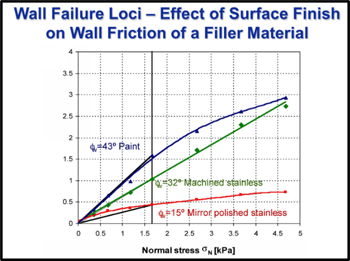
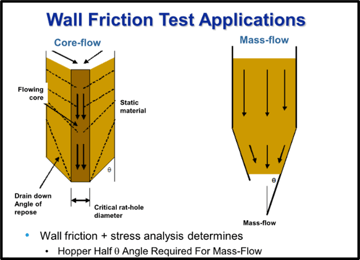
Time: As can be seen in the graphs below, the longer some materials remain under pressure due to the weight of material above it in a hopper, bin or silo, the more it will compress and increase its cohesiveness (i.e. Flow Factor). This can be due to particle rearrangement, plastic flow, moisture migration, chemical reaction or electrostatics. Regardless of the cause, this phenomenon should not be overlooked when designing hoppers or silos for specific materials.
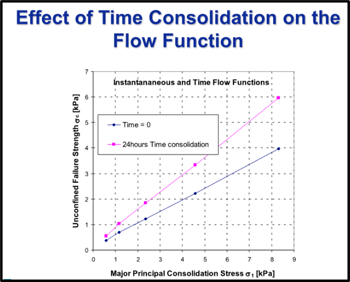
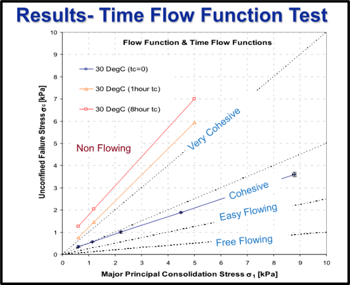
Solids Flow Problems: Issues related to solids flow commonly arise when material does not flow through and out of a hopper or bin due to one of the following reasons:
- Rat-holing - Funnel (or core) flow occurs when the hopper discharge angle is not steep enough to allow the material resting on it to flow freely to the bottom outlet. This often results in a rat-hole forming directly above the hopper outlet. This leads to poor material usage since the solids along the side wall will remain in the hopper much longer than fresher, newly added material that fills in the center of the vessel and exits the “rat-hole”.
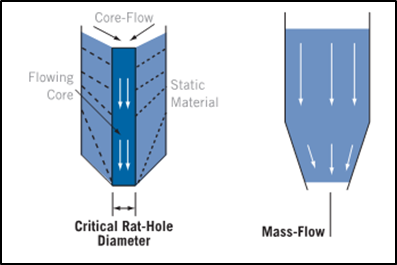
- Bridging - Another problem with hopper discharge can occur when material will not flow out the bottom discharge because its internal cohesion is greater than the downward force imparted onto the material above the opening. This results in arching (or bridging) of material across the opening.
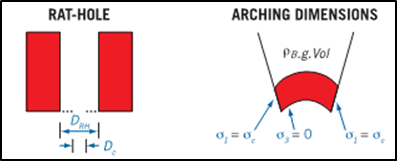
As part of our material testing regimen, De Dietrich Process Systems utilizes a Brookfield Powder Flow Tester (PFT) to measure and analyze the properties of solids discussed above. This information, along with direct transfer testing, allows us to avoid powder flow issues and design flaws. Are you interested in learning more about the characteristics and flow properties of your solids? Contact us for more information or to schedule an exploratory meeting so that we can learn more about your process objectives and solids handling needs.
